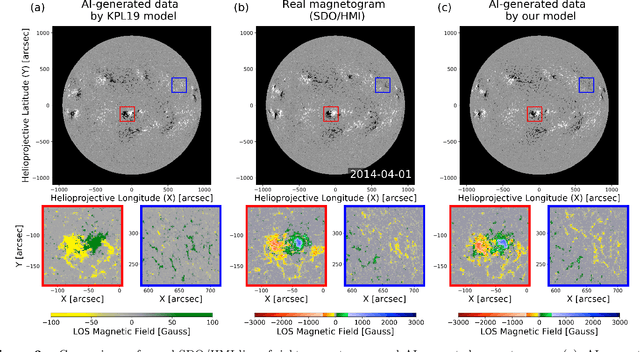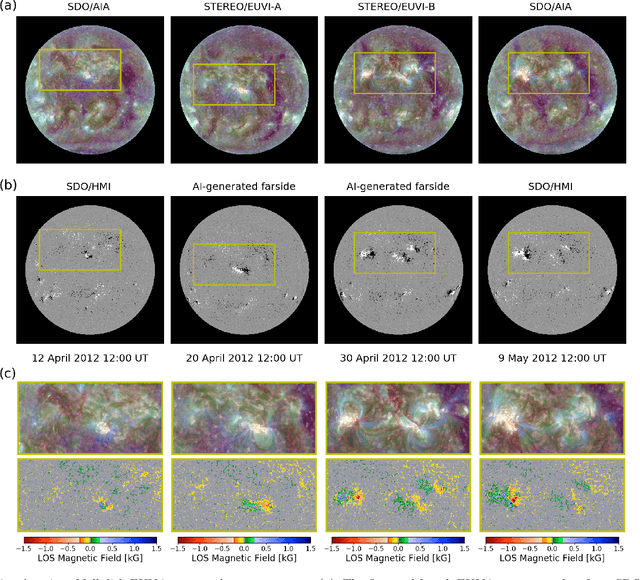Solar Coronal Magnetic Field Extrapolation from Synchronic Data with AI-generated Farside
Paper and Code
Nov 01, 2020



Solar magnetic fields play a key role in understanding the nature of the coronal phenomena. Global coronal magnetic fields are usually extrapolated from photospheric fields, for which farside data is taken when it was at the frontside, about two weeks earlier. For the first time we have constructed the extrapolations of global magnetic fields using frontside and artificial intelligence (AI)-generated farside magnetic fields at a near-real time basis. We generate the farside magnetograms from three channel farside observations of Solar Terrestrial Relations Observatory (STEREO) Ahead (A) and Behind (B) by our deep learning model trained with frontside Solar Dynamics Observatory extreme ultraviolet images and magnetograms. For frontside testing data sets, we demonstrate that the generated magnetic field distributions are consistent with the real ones; not only active regions (ARs), but also quiet regions of the Sun. We make global magnetic field synchronic maps in which conventional farside data are replaced by farside ones generated by our model. The synchronic maps show much better not only the appearance of ARs but also the disappearance of others on the solar surface than before. We use these synchronized magnetic data to extrapolate the global coronal fields using Potential Field Source Surface (PFSS) model. We show that our results are much more consistent with coronal observations than those of the conventional method in view of solar active regions and coronal holes. We present several positive prospects of our new methodology for the study of solar corona, heliosphere, and space weather.
 Add to Chrome
Add to Chrome Add to Firefox
Add to Firefox Add to Edge
Add to Edge